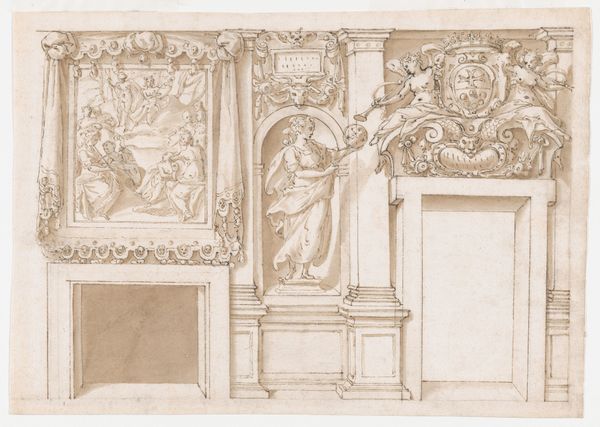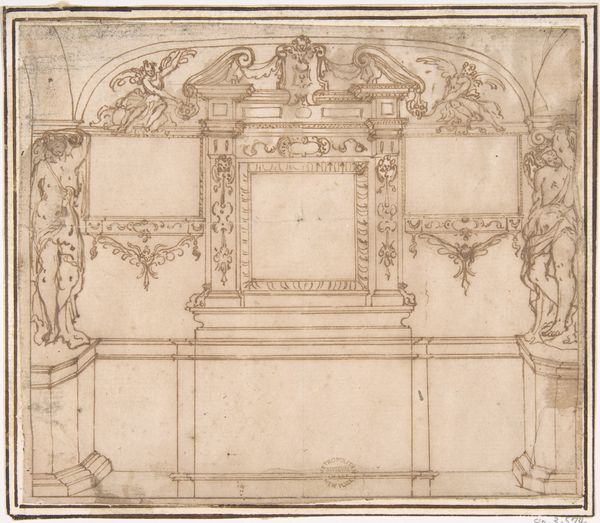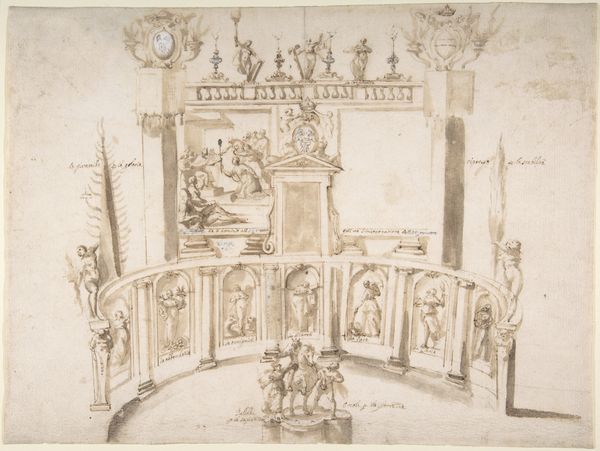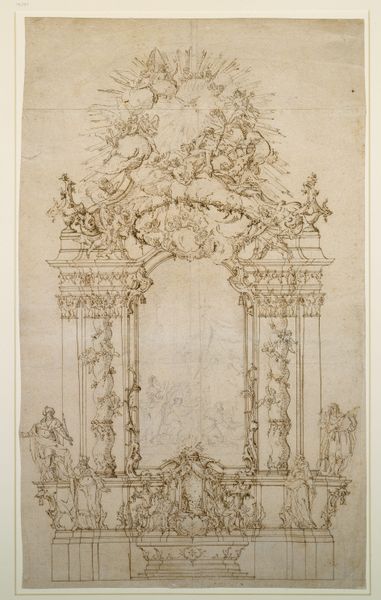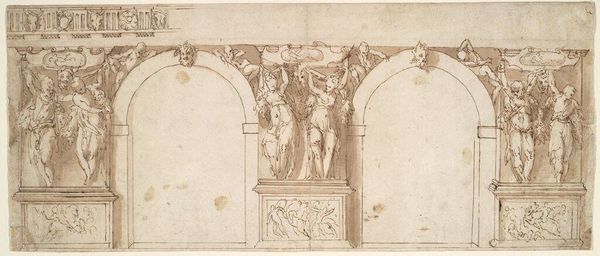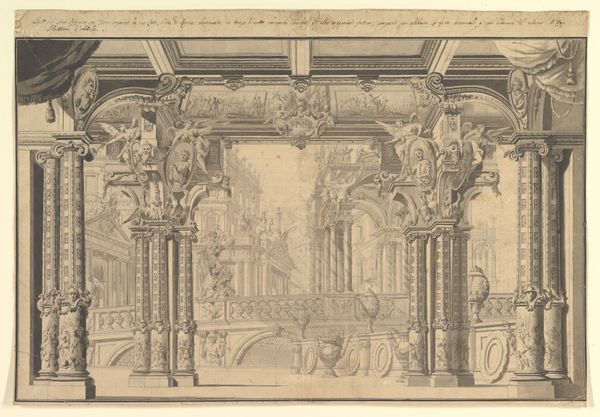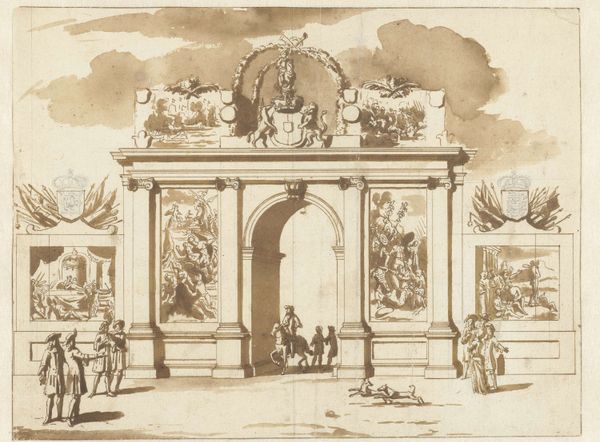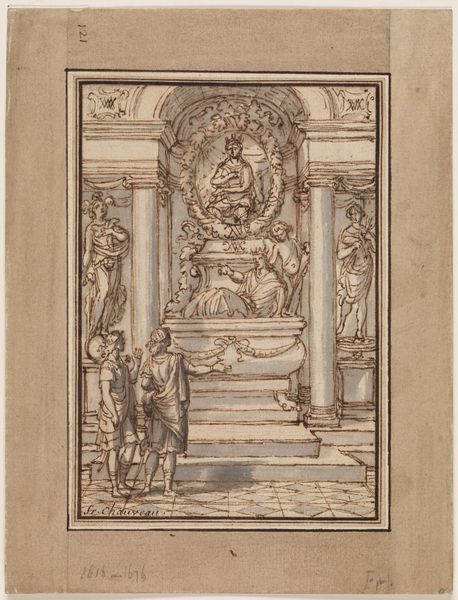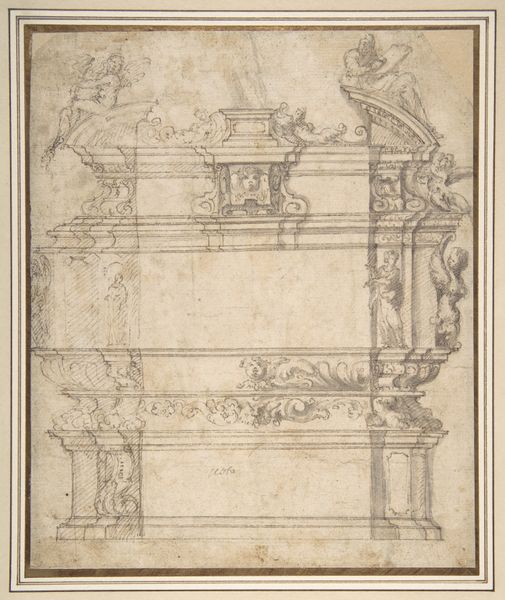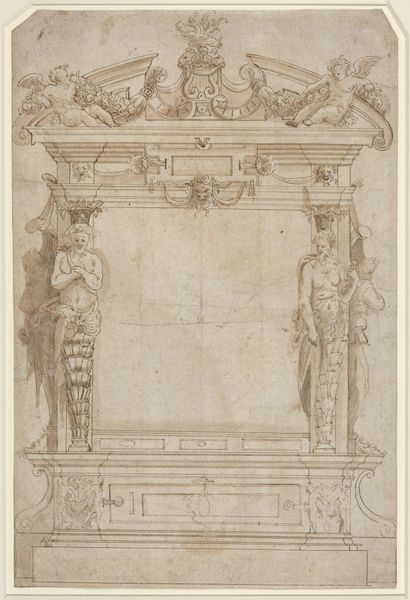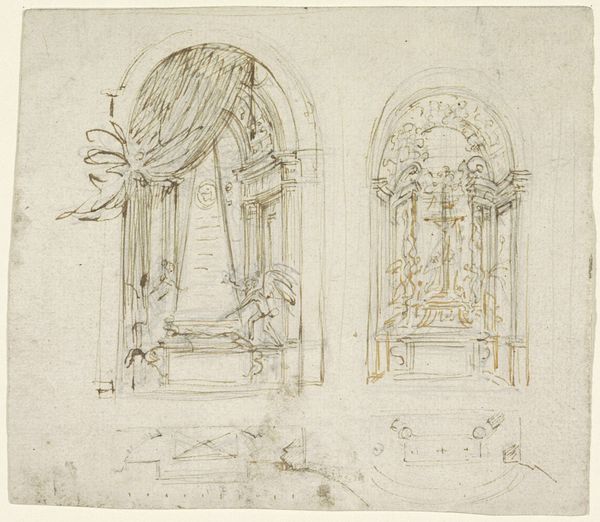
Design for a Painted Wall Decoration, with Figures in a Landscape with Classical Ruins 1700 - 1800
0:00
0:00
drawing, print, etching, ink
#
drawing
# print
#
etching
#
landscape
#
etching
#
figuration
#
11_renaissance
#
romanesque
#
ink
#
genre-painting
#
history-painting
Dimensions: 8-3/16 x 16-3/16 in. (20.8 x 41.1 cm)
Copyright: Public Domain
Editor: So, this is "Design for a Painted Wall Decoration, with Figures in a Landscape with Classical Ruins," made sometime between 1700 and 1800, author is unknown, but the museum here in New York has it. The light washes of ink are what really struck me. What elements do you find most compelling in this design? Curator: Note first how the architecture dominates, a classical frame meticulously rendered in etching, drawing our gaze. Observe the balance. The verticality of the doorway opposes the horizontality of the landscape beyond. Light plays a crucial role, washing across surfaces, creating depth and shadow. Do you see how the figures, though small, are carefully placed to guide the eye deeper into the pictorial space? Editor: Yes, now that you mention it, the positioning almost feels stage-like. It’s like the architecture creates a proscenium for these little dramas. Curator: Precisely. The formal arrangement is key. Consider how the artist uses line to delineate form, creating a tension between the solid architecture and the fleeting figures. It isn't merely representation; it's about the relationship of forms, the interplay of light and shadow. Semiotics would describe these relationships as a means for the artist to show space in the mind and in an idealized time. What meanings do *you* derive from that positioning and structure? Editor: I guess it highlights the contrast between the permanence of classical architecture and the fleeting nature of human life, maybe? The people almost seem incidental. Curator: An astute observation. It reveals the underlying structure, the formal logic guiding the composition. Notice the texture, too: the way the ink creates variations that engage the eye. It moves beyond what it depicts into *how* it does so. Editor: Right. I was so focused on what it showed I almost forgot to really *look* at how. Curator: Indeed. That’s the essence of understanding design. The drawing provides that possibility. Editor: Thank you! That completely changed how I saw it. I was missing the point, which is the artist’s control of his elements!
Comments
No comments
Be the first to comment and join the conversation on the ultimate creative platform.
